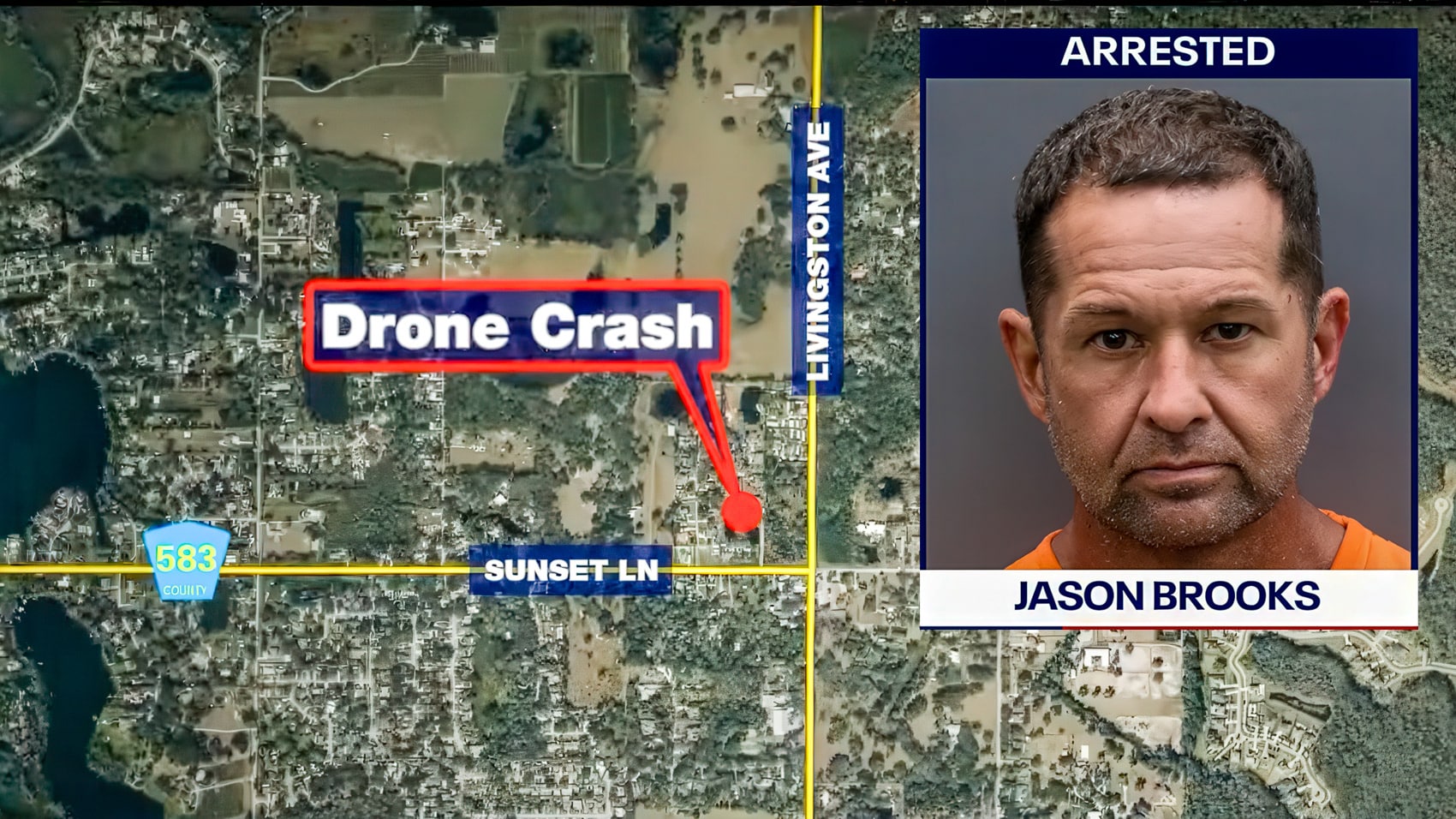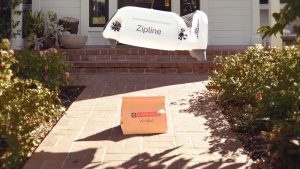A peculiar early-morning incident recently transpired in Lutz, Florida, a quaint town north of Tampa, when a drone loaded with illegal drugs ended up crashing into a family’s backyard. This event, tagged as the “Florida Man’s Drone Drug Fiasco,” mirrors a storyline out of a Coen Brothers film and has drawn attention far beyond Florida. This article delves into the incident, covering the rising trend of drone-related crimes and offering insights for drone users and technology enthusiasts interested in public safety.
The Crime: A High-Tech Drug Delivery Goes Awry
In the early hours of August 19, 2025, residents of Hannah Michaela Lane in Lutz, Florida, were startled by a drone crashing into their yard. The drone’s cargo? A brown cloth bag stuffed with several packets of methamphetamine and fentanyl. Interestingly, one of the bags was marked “share this,” potentially intended to incite a communal misadventure.[1][2][3][4]
As the family was grappling with the unexpected delivery (imagine “Amazon Prime” from Walter White), 49-year-old Jason Brooks, the purported drone operator, arrived at their front door with his controller, claiming to be searching for his missing drone.[1][2][3][4][5] The authorities were promptly alerted. Brooks’ unannounced late-night visit, alongside his history of 15 prior offenses, did little to help his situation.[3]
The police swiftly uncovered the ploy: the innovative use of drones for drug trafficking seemed “creative,” yet this incident exposed the reckless risks and amateur pitfalls inherent in these schemes. Officers noted the small drug packages were already labeled, indicating they were meant for multiple recipients. Quickly, bodycam footage of the event circulated on social media, demonstrating how even low-tech attempts at high-tech crime can go terribly wrong.[1][2][3][4]
Charges and Consequences
Brooks was apprehended once deputies uncovered the illegal cargo, his revoked driver’s license, and an unregistered vehicle nearby. He faced multiple charges, including:
- Possession of a controlled substance
- Intent to sell narcotics
- Operating a drone for criminal purposes
- Driving with a revoked license
- Operating an unregistered vehicle
Moreover, existing warrants from nearby counties meant Brooks was held without bond on at least one charge.[4]
How the Drones-for-Drugs Scheme Operates
This isn’t the first instance of law enforcement encountering drones used for illicit deliveries; each occurrence provides fresh insights and lessons. The primary allure for traffickers is straightforward: drones can navigate around barriers, cameras, and ground-level patrols, discreetly delivering compact but potent payloads.
- Typical Cargo: High-value, low-bulk substances like methamphetamine, fentanyl, heroin, and prescription opioids.
- Delivery Style: Small drones, modified for increased carrying capacity, are flown to designated “drop sites”—yards, windows, or prison yards.
- Tech Footprint: Most commercial drones record GPS data, offering vital clues for investigators tracking previous routes and destinations.[3][4]
- Common Mistakes: Overburdened drones crash, operators stay too close to the action, and noticeable labeling on baggies—professional criminals would be embarrassed.
In this scenario, the pilot’s prompt arrival at the scene underscored the limitations of makeshift crime and how unacquainted some users are with the technical complexities of drone operation.
Legal Fallout: Key Points for Drone Users in Florida
This incident underscores the urgent need for stricter drone regulations and enforcement. Current and prospective drone owners should be mindful of the following:
- Federal Law (FAA): All U.S. drones over 250 grams must be FAA-registered and cannot be used for illegal activities, including drug transportation.
- State Law: Florida imposes severe penalties for using UAVs in criminal activities; harsher sentences are applicable when controlled substances are involved.
- Drug Trafficking: Utilizing drones to facilitate drug sales can be prosecuted at both state and federal levels, with possible sentence enhancements for “device use to evade detection.”
- Privacy & Trespass: In addition to criminal charges, deploying drones onto private premises without permission can lead to civil litigation, especially if they cause damage or disturbance.
- Criminal Records: Previous convictions, like those of Brooks, generally result in heavier penalties for new offenses, especially if public safety is at risk.[1][2][3][4]
The Broader Context: Technology, Public Safety, and Community Response
Incidents such as this prompt reflection among residents and officials about the transformative potential of technology, for both positive and negative uses. A statement from the sheriff’s office highlighted the relief that only illegal drugs—not a child—were dropped at the doorstep, praising the “vigilant residents and quick-responding deputies” for averting further danger.[2][3]
Real-World Implications:
- Community Vigilance is Crucial: Timely reporting by homeowners was essential. Should you encounter an unmarked or suspicious drone, refrain from tampering and contact local authorities.
- Digital Law Enforcement: Increasingly, police are trained to extract information from drone flight logs and onboard cameras, becoming a staple in digital forensics.[3][4]
- Drone Forensics: GPS logs, flight records, and even fingerprints or DNA from controllers are essential evidence in technology-driven crimes.
Lessons for Conscientious Drone Owners
If you’re in the market for the best drone for photography or other purposes, don’t be deterred by these cautionary tales—most drone operators are law-abiding. However, these events should prompt introspection regarding your practices and security:
- Register Your Drone: Compliance with the law not only facilitates device recovery but also ensures adherence to legal regulations.
- Understand Local Laws: Avoid restricted zones, maintain line-of-sight during flights, and do not drop items without appropriate licenses.
- Secure Your Equipment: Consider anti-theft identifiers; contemporary drones can be “bricked” or tracked remotely if misplaced.
- Public Perception: Even innocuous flying can erode public trust without proper intent. Treat each flight as a representation of the entire drone community.
“Florida Man” & the Meme Culture
No narrative about epic drone blunders is complete without mentioning the “Florida Man” meme—a humorous shorthand for the plethora of quirky crimes stemming from the state. This case fits seamlessly: makeshift delivery drones, impromptu nighttime search endeavors, and bags labeled “share this”—as if inviting the neighborhood to a not-so-innocent gathering.
For the drone industry, these stories serve as humorous relief at times and cautionary tales at others; as technology progresses, public engagement, advocacy, and operator education must follow suit.
The Human Element—Our Team’s Perspective
At [Your Company/Expert Team], we’ve worked with a diverse group of drone enthusiasts—from photographers and realtors to emergency responders and onlookers intrigued about the neighbor’s drone footage. Our aim is to leverage technology for good: facilitating disaster mapping, capturing special events, ensuring medical deliveries, and more—not as auxiliary fleets for illicit activities.
An authentic client experience: Last year, a Tampa realtor approached us post an alarming incident during a drone shoot. After a complimentary community seminar on drone regulations and privacy, public interest surged. Often, initiating a dialogue is the best way to avert a fiasco.
Expert Recommendations: Staying Compliant
- New to Drones? Enroll in an online course covering FAA regulations and safety protocols.
- Upgrading for Business? Consider licensing, especially for real estate, mapping, or delivery sectors.
- Concerned About Misuse? Join local drone clubs or advocacy organizations; they often collaborate with law enforcement and bolster community trust.
- Encountered a Crash? If you discover a stray drone: avoid touching the content, capture the scene with photos if feasible, and notify authorities.
Looking Ahead: Innovation, Education & Trust
Drones are a mainstay, heralding advances from high-end aerial imagery to emergency interventions and sustainable logistics. But each tool comes with the potential for misuse, and every spectacular error (whether or not it’s from the “Florida Man” chronicles) reminds us that aviation’s future rests on trust, transparency, and community interaction.
Wishing your drones always land smoothly—and your packages contain only welcome surprises.













